For a glossary of terms, the dashboard manual and reports related to labour shortages and surpluses, please scroll down or click here.
Shortages and surpluses dashboard 2024 (EN)
The dashboard is based on data collected for European Labour Authority (2025), EURES report on labour shortages and surpluses 2024, which compiles administrative data from public employment services (PES) and data from other sources as submitted by the EURES National Coordination Offices.
Contributors used different methodologies and data sources available at national level.
Glossary - Definitions
- ISCO
The International standard classification of occupations (ISCO) is an international classification under the responsibility of the International Labour Organization (ILO) for organising jobs into a clearly defined set of groups according to the tasks and duties undertaken in the job.
- Labour shortage
When there is a sufficient number of people with the required skills, but for various reasons an insufficient number of them take up employment in the occupation and location in question.
- Labour surplus
When there is a higher number of people with the required skills looking to take up employment in the occupation and location in question than there are jobs available.
- Severe shortage
Severe shortage is equivalent to a shortage of a high magnitude, as defined by EURES National Coordination Offices (NCOs) for their national context.
- Skills shortage
Where there is insufficient supply for the skills needed.
- Skills surplus
Where there is insufficient demand for the skills available.
Annual reports on labour shortages and surpluses
These reports identify shortage and surplus occupations in the EU, Norway, Iceland and Switzerland and explore the causes of shortages and propose potential solutions.
Report of shortage and surplus occupations 2024 (EN only)
This seventh edition of the European Employment Services (EURES) report on labour market imbalances explores the current status of labour shortages and surpluses and how they have developed over time. Since the first report, published in 2016, the methodology for identifying labour shortages and surpluses has relied on the EURES National Coordination Offices as its primary data source, complemented by additional quantitative and qualitative sources.
While continuity in the methodology has largely been maintained between different editions of the report, there have been changes to the data collection process for this edition. These changes enable a more comprehensive collection of information on labour market imbalances, but limit comparisons with previous reports.
This edition introduces new features to the analysis, including the quantification of labour market imbalances, a refined methodology for analysing the characteristics of workers in shortage and surplus occupations and an indepth
focus on the transportation and storage sector.
For more information, click here
Report of shortage and surplus occupations 2023 (EN only)
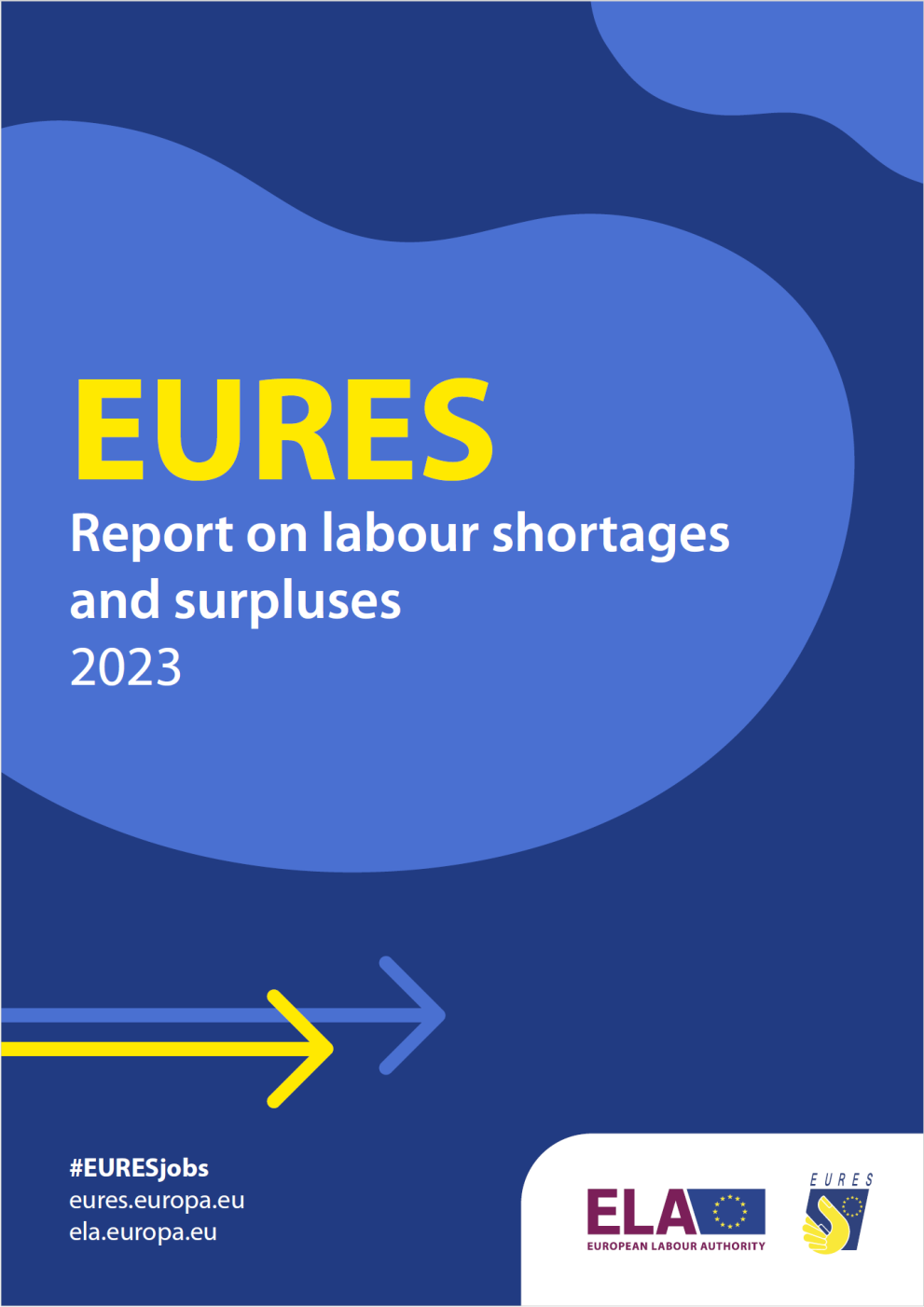
The sixth edition of the EURES report on labour market imbalances shows a tightening labour market across Europe. In spite of slower economic growth many companies are competing for workers who are willing or able to work in the jobs offered at the location where they are needed. This is particularly obvious in construction and engineering crafts, healthcare and ICT occupations.
Reasons are manifold: structural change in the economy, the digital and green transition resulting in changing skill requirements, demographic change and societal developments, unattractive working conditions or mismatches between workers’ and employers’ preferences are just a few of them.
Among the most critical shortage occupations – i.e., shortages that are widespread and severe – were: heavy truck drivers, nursing professionals and (specialist) doctors, electricians, roofers, waiters or construction labourers.
The structure of the report has undergone considerable change – especially in the past two years. While the primary source of the data on labour market imbalances continues to be the EURES National Coordination Offices (NCOs), additional quantitative and qualitative sources have been added. The report also contains a specific analysis of labour shortages in the construction sector.
For more information, click here
Report of shortage and surplus occupations 2022 (EN only)

The report identifies the most common and severe labour shortages and surpluses in Europe and explores the main causes.
As Europe’s economies emerge from the impact of the COVID-19 pandemic, labour shortages are becoming increasingly evident. These include shortages exacerbated by the crisis in some sectors and occupations where they had been endemic for some time, as well as shortages.
In late 2022, job vacancy rates reached unprecedented highs, with ongoing demographic trends raising concerns that recruitment challenges could intensify further in certain sectors, occupations and regions. The fight for talent and the resulting challenges for growth and competitiveness are high on the EU and national policy agenda.
For more information, click here.
Analysis of shortage and surplus occupations 2021 (EN only)
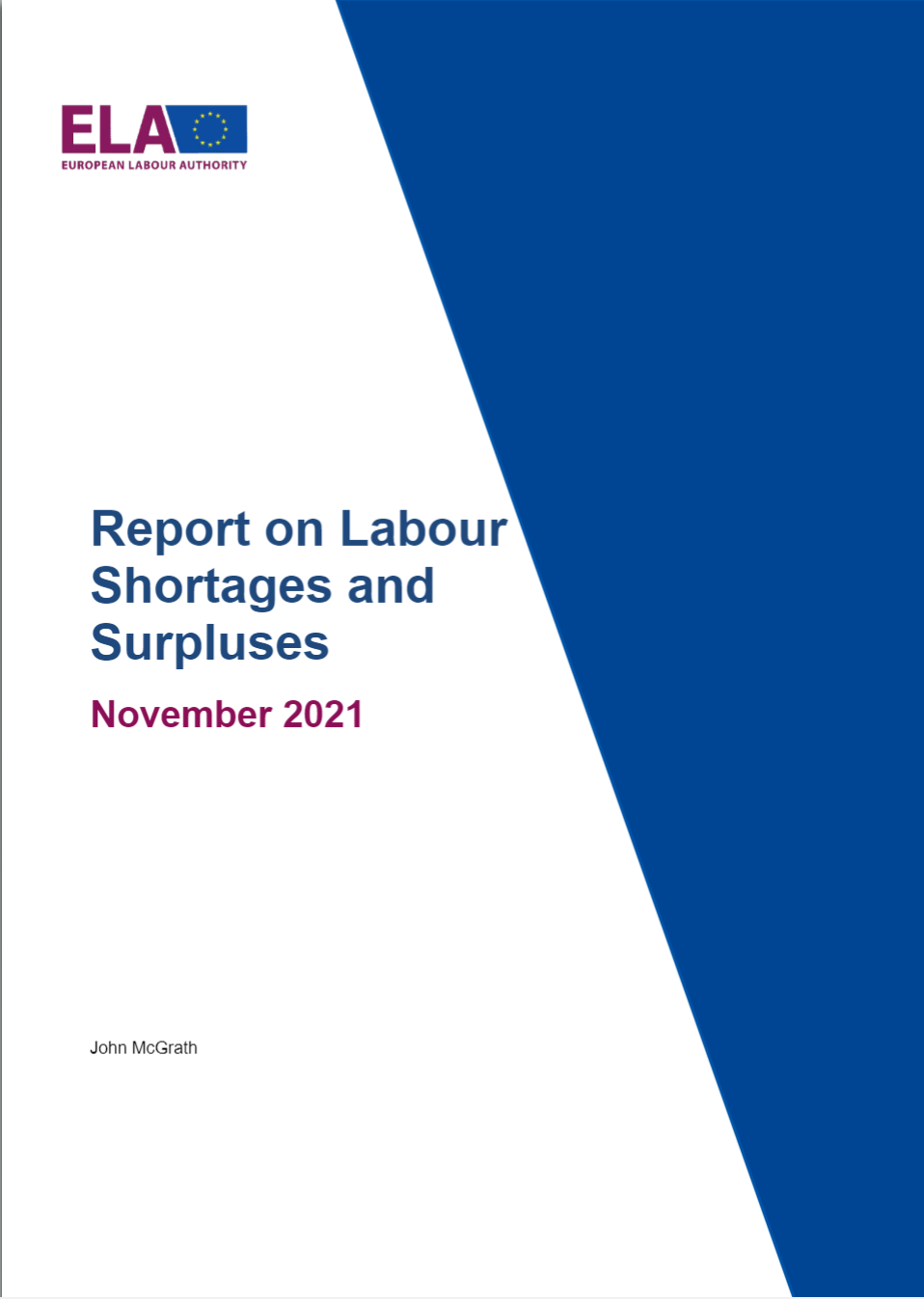
The report provides detail on labour shortages and surpluses such as their extent and severity, and the profile of workers in these shortage and surplus occupations between the second half of 2020 and the first quarter of 2021, covering 30 countries and regions including 25 EU Member States.
During this period, the European labour market continued to be strongly impacted by the COVID-19 pandemic. A discussion on labour shortages and surpluses in times of the pandemic is therefore also included.
The overall objective of the annual reports on skill shortages and surpluses in Europe is to implement Article 30 of EURES Regulation (EU) 2016/589.
Analysis of shortage and surplus occupations 2020 (EN only)
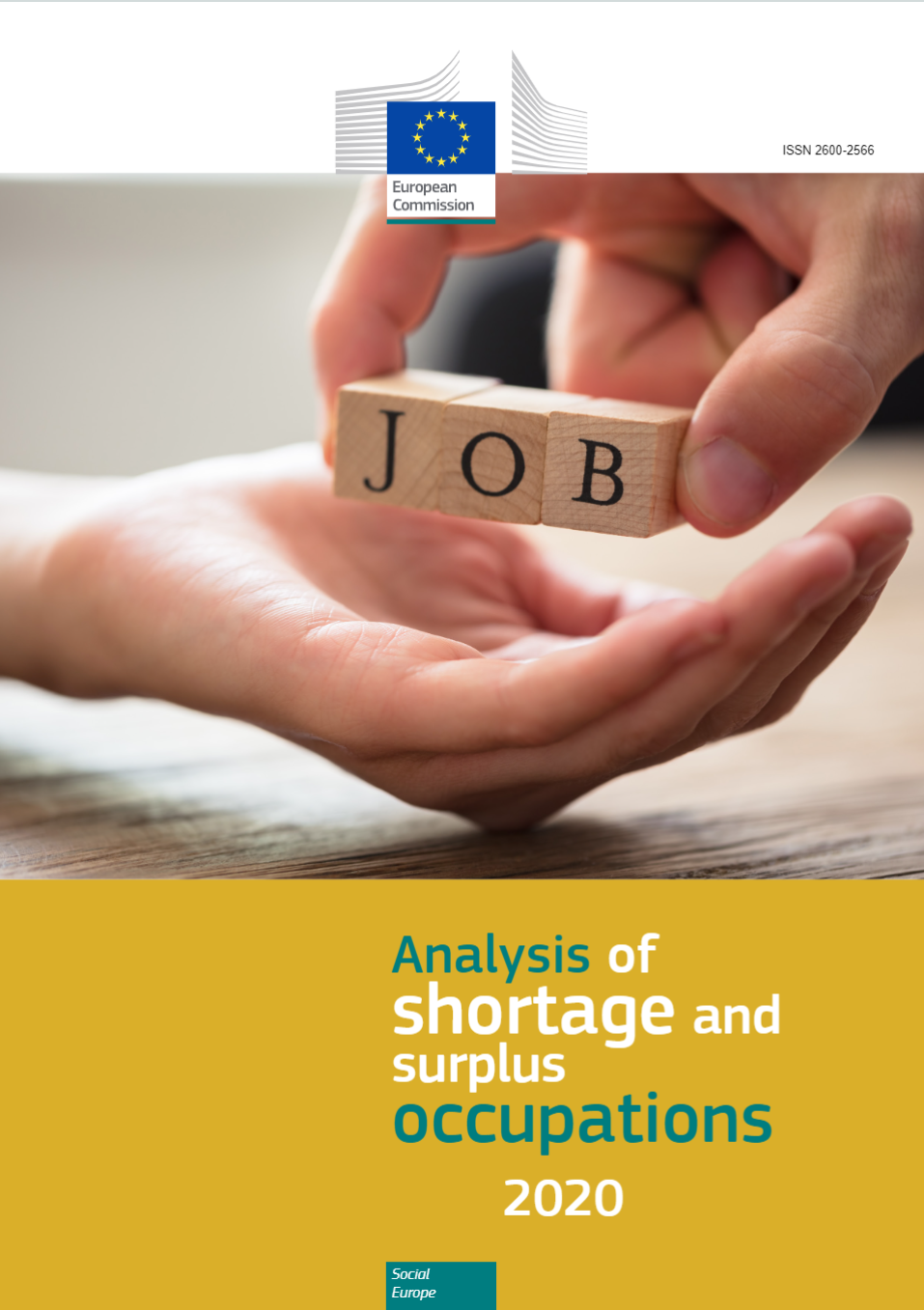
The overall objective of the annual reports on skill shortages and surpluses in Europe is to implement Article 30 of EURES Regulation (EU) 2016/5891. The current issue covers the period 2019-2020, during which the European labour market was strongly impacted by the COVID-19 pandemic. It includes a preliminary analyses of the impact of that pandemic on skill shortages.
Labour shortages and surpluses 2019 (EN only)
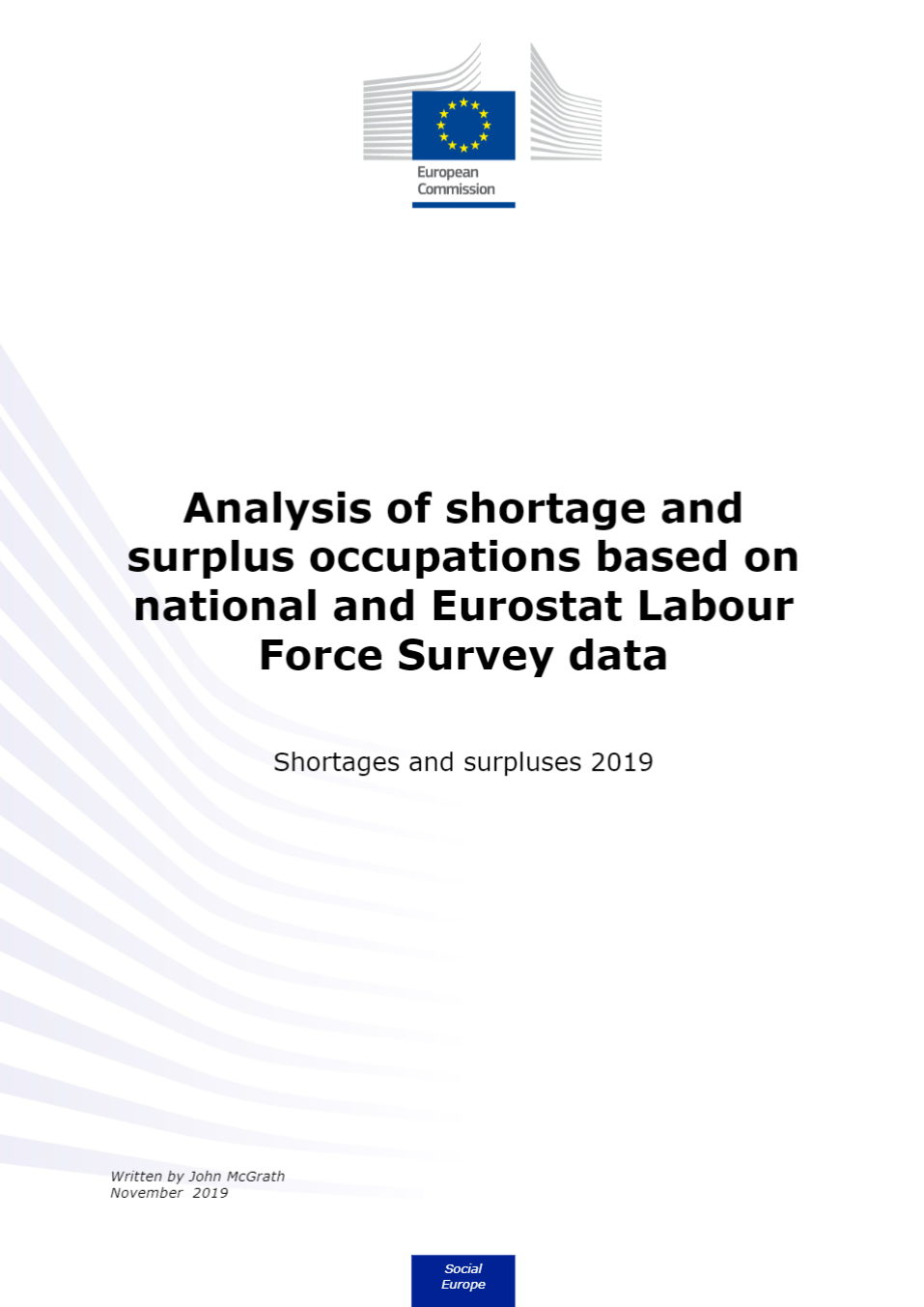
This report identifies jobs which are considered to be in short supply and jobs where there is insufficient demand for the skills available, in the EU, Norway, Iceland and Switzerland.
In 2019, there is a high demand for software-related skills, engineering skills, and to a lesser extent in health-related skills. Accountants and marketing executives are also sought-after. The craft occupations dominate the list, especially those related to construction and engineering. Another well represented sector is the hospitality one, including cooks, chefs and waiters. Regarding the surpluses, in general, the occupations are clerical or related to ‘humanities’ disciplines, such as philosophers and historians, sociologists’ anthropologists, and journalists.
Labour shortages and surpluses 2017 (EN only)

The focus of this report is to ultimately draw on the findings in the whole series and create a model which can accurately and comprehensively identify imbalances and cross-border matching possibilities in a manner which is of practical use to EURES and the national VET authorities in the EEA countries. Facilitating the matching of skills and jobs across borders in the EU contributes to the better functioning of labour markets in the EU, as pursued by the EURES network. Supporting the identification of skills shortages and the better matching of skills of job-seekers with the needs of employers is also among the objectives of the European Network of Public Employment Services (PES Network).
Labour shortages and surpluses 2016 (EN only)
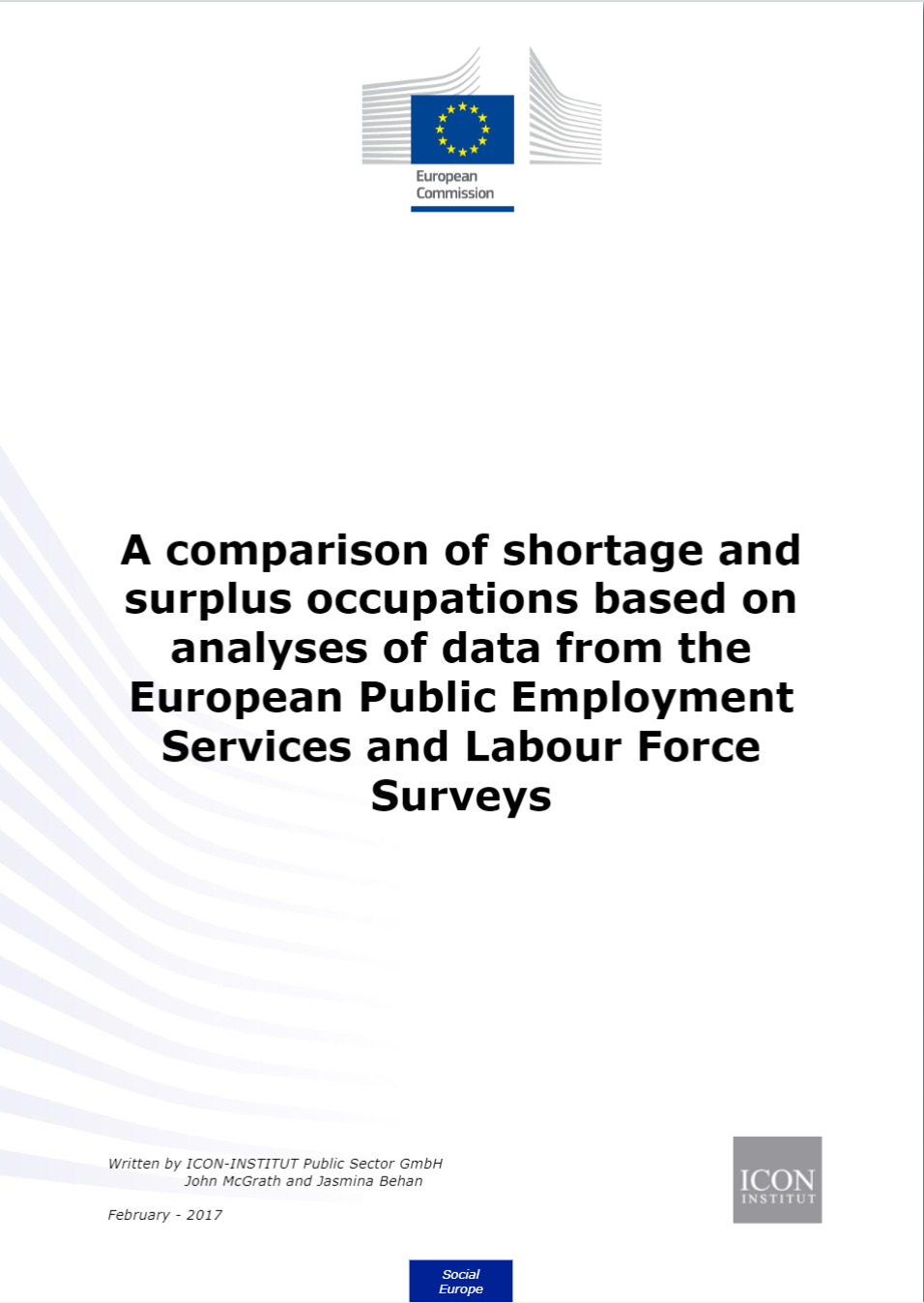
This report, expands the analyses of data submitted by 23 European Public Employment Services (PES) to include analyses of surplus occupations and explores possible matching of shortages and surpluses across countries. It also explores the possibility of using the European Labour Force Survey (LFS) to identify shortage and surplus occupations.